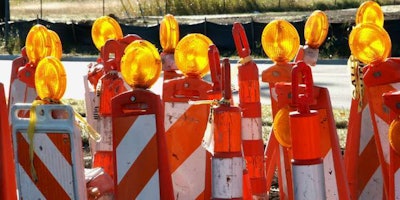“Crumbling infrastructure will be replaced with new roads, bridges, tunnels, airports and railways gleaming across our beautiful land.”
That was one of the many applause lines delivered by President Donald Trump in his first address to a joint meeting of Congress Tuesday, Feb. 28. He went on to propose spending $1 trillion on “a new program of national rebuilding,” which will rely heavily on public-private partnerships.

Trump’s plan is expected to begin taking shape today as representatives from at last 15 federal agencies meet to discuss possible projects to be considered. That gathering will be led by Gary Cohn, director of the National Economic Council, and will also look at rules and regulations that might delay projects as well as funding.
The National Governors Association has already provided the White House, at its request, a list of 428 projects members of the organization say are top priorities.
Using private funds to pay for infrastructure projects could mean more tolls on U.S. roadways. Some also fear that it could lead to the commercialization of public facilities — like highway rest stops — that would then compete with private businesses. Many such projects might be undertaken near urban centers, where traffic volume makes it easier for private companies to recoup their investment and earn profits.
Transportation Secretary Elizabeth Chao reinforced Trump’s call for improving the country’s roads and bridges.
In a speech Wednesday, March 1 before the American Association of State Highway and Transportation Officials Chao said, “Businesses employing millions of workers are losing their competitive edge because our country’s infrastructure can’t accommodate their logistical systems. That means more supply chain disruptions and inventories that languish longer than necessary in warehouses. That adds unnecessary costs to the bottom line, and drives up the cost of goods and services.”
Like Trump, Chao called for regulatory reform to eliminate possible delays in any projects and added, “Barriers that hamper our ability to tap the full potential of public private partnerships need to be removed.”












